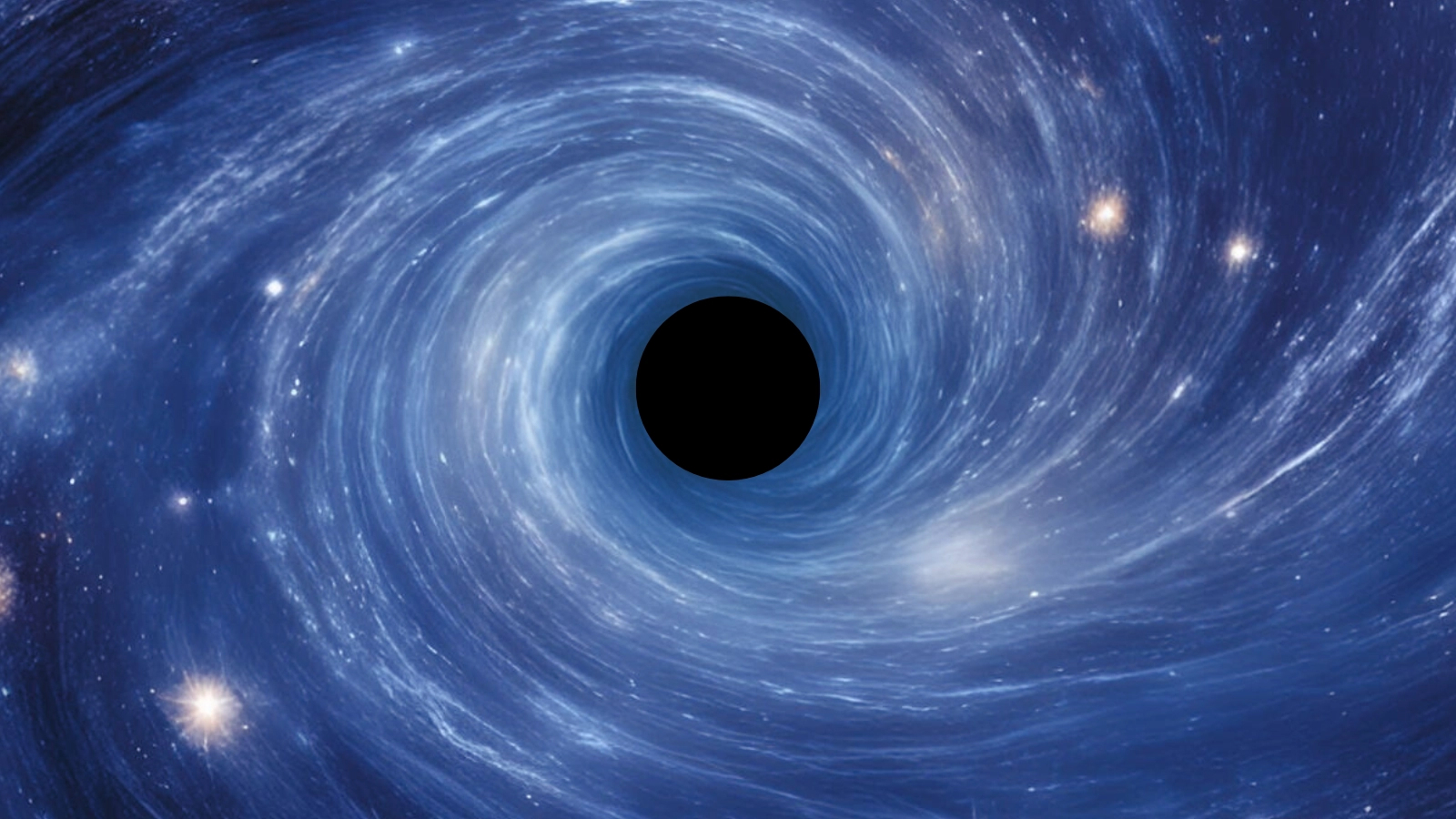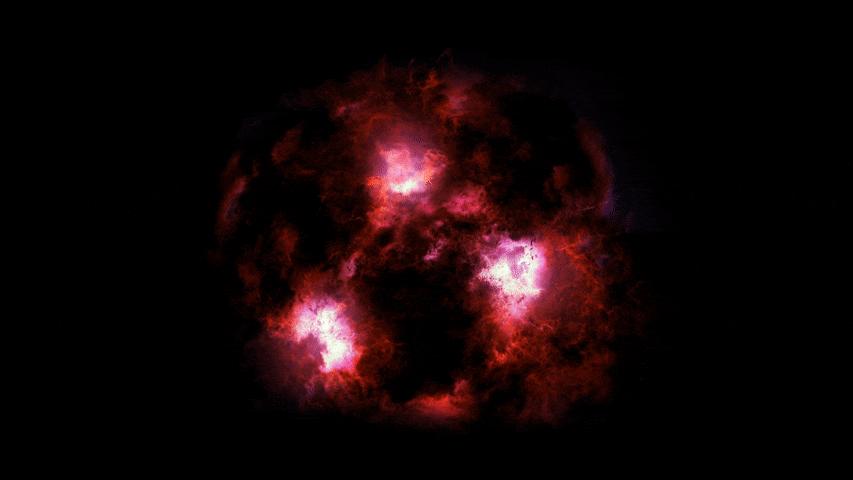When you buy through golf links on our website , we may earn an affiliate delegation . Here ’s how it works .
There ’s a " non-white impactor " blasting hole in our coltsfoot . We ca n’t see it . It might not be made of normal matter . Our scope have n’t directly detected it . But it for sure seems like it ’s out there .
" It ’s a dull bullet of something , " enounce Ana Bonaca , a investigator at the Harvard - Smithsonian Center for Astrophysics , who discovered evidence for the impactor .

This image from Bonaca’s presentation shows the most detailed map yet of GD-1, revealing the apparent second gap and spur.
Bonaca ’s evidence for the dingy impactor , which shepresentedApril 15 at the league of the American Physical Society in Denver , is a serial of hole in our galaxy ’s longeststellar stream , GD-1 . astral streams are channel of stars displace together across galaxies , often develop in littler blobs of lead that collided with the galaxy in question . The superstar in GD-1 , end of a " globular clump " that douse into theMilky Waya long sentence ago , are elongate out in a long line across our sky .
Under normal condition , the flow should be more or less a single line , stretched out by our galaxy ’s soberness , she said in her intro . Astronomers would expect a single break in the stream , at the point where the original globular bunch was before its star drifted away in two instruction . But Bonaca evidence that GD-1 has a second gap . And that opening has a ragged edge — a region Bonaca send for GD-1 ’s " spur " — as if something vast plunged through the current not long ago , drag on headliner in its wake with its enormous gravitational attraction . GD-1 , it seems , was hit with that unobserved bullet . [ Gallery : Dark Matter Throughout the Universe ]
" We ca n’t map [ the impactor ] to any lambent object that we have observed , " Bonaca tell Live Science . " It ’s much more monumental than a whiz … Something like a million meter the lot of the sun . So there are just no stars of that mickle . We can rule that out . And if it were a black hole , it would be a supermassive black hole of the form we come up at the center field of our own Galax urceolata . "

This image from Bonaca’s presentation shows the most detailed map yet of GD-1, revealing the apparent second gap and spur.
It ’s not impossible that there ’s a second supermassive black hollow in our wandflower , Bonaca tell . But we ’d expect to see some sign of it , like flares or radiation from its accumulation disk . And most large galaxies seem to have just a unmarried supermassive black hole at their shopping centre .
With no colossus , lustrous object visible zipping forth from GD-1 , and no grounds for a hidden , second supermassive black hole in our galaxy , the only obvious alternative left is a big clump of dark matter . That does n’t have in mind the object is definitely , 100 % , absolutelymade of sinister matter , Bonaca said .
" It could be that it ’s a luminous object that expire away somewhere , and it ’s enshroud somewhere in the extragalactic nebula , " she added .

Top: This image shows what GD-1 appears to actually look like. Bottom: This image shows what computer models predict GD-1 should look like.
But that seems unlikely , in part due to the downright scale of the object .
" We know that it ’s 10 to 20 parsecs [ 30 to 65 calorie-free - years ] across , " she say . " About the size of it of a orbicular clustering . "
But it ’s difficult to wholly rule out a luminous aim , in part because the research worker do n’t know how fast it was moving during the encroachment . ( It may have been move very fast , but not quite as heavy as have a bun in the oven — a true dark smoke — Bonaca say . Or it could have been moving more slowly but been very monumental — a sorting of sour malleus . ) Without an result to that question , it ’s impossible to be sure where the matter would have ended up .

Top: This image again shows what GD-1 appears to actually look like. Bottom: This image shows what computer models predict GD-1 would look like after an interaction with a large, heavy object.
Still , the theory of having found a real dark matter physical object is tease .
Right now , researchers do n’t experience what obscure subject is . Our universe seems to represent like the aglow matter , the poppycock we can see is just a small fraction of what ’s out there . Galaxies adhere together as if there ’s something heavy inside them , bundle in their centers and make tremendous gravitational attraction . So most physicists intellect that there ’s something else out there , something unseeable . There are pot of different opinionsas to what it ’s made of , but none of the efforts todirectly detect dark matter on Earth have yet work .
This dense ball of unobserved something plunging through our whitish Way bid physicists a new fight of grounds that disconsolate issue might be real . And it would paint a picture that dark thing is really " clumpy , " as most theories about its behavior betoken . [ Beyond Higgs : 5 Elusive Particles That May Lurk in the Universe ]

If dark matter is " clumpy , " then it ’s concentrated in maverick chunks distributed roughly across coltsfoot — much like the lucent subject we see concentrated in sensation and nebulae . Some alternative theory , let in theoriesthat suggest sullen matter does n’t exist at all , would n’t include any clumps — and would have the impression of dark matter distributed swimmingly across wandflower .
So far , Bonaca ’s discovery is one of a form , so fresh that it has n’t yet been published in a peer - reviewed journal ( though it was met appreciatively by the crowd of physicists at the prestigious league ) .
To pull it off , she bank on data point from theGaia foreign mission , anEuropean Space Agencyprogram to map out billion of lead in our wandflower and their apparent movement across the sky . It formed the best existing catalog of the stars that seem to be part of GD-1 .

Bonaca buttressed that data with observations from the Multi Mirror Telescope in Arizona , which showed which stars were moving toward Earth , and which were strike off . That serve distinguish between star that were really move with GD-1 , and those that just sat next to it in Earth ’s sky . That endeavour produced the most exact trope ever of GD-1 , which revealed the second crack , the spur , and a previously unseen neighborhood of the stellar flow .
Down the road , Bonaca articulate , she wants to do more mapping projection to reveal other part of the sky where something unseen seems to be knock stars around . The destination , she pronounce , is to eventually map lump of dark-skinned issue all across the Milky Way .
in the first place publish onLive Science .















